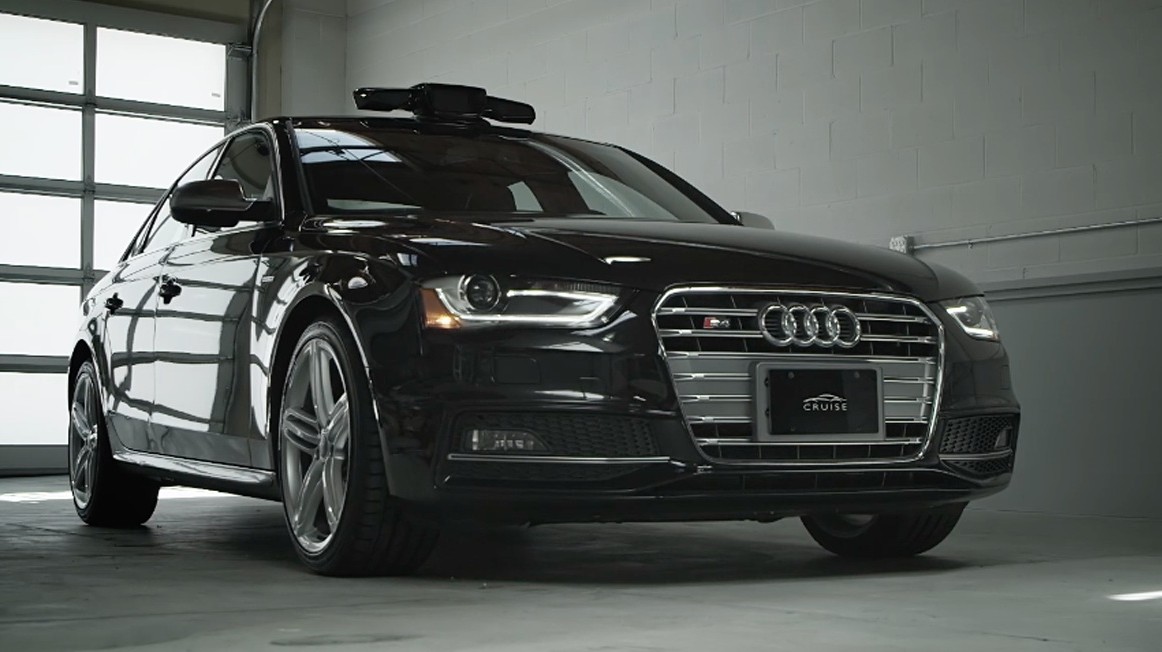
Google Google’s driverless car project has been getting plenty of attention for the kinds of changes it could bring to transportation, but buying an entirely new, self-driving car is out of most people’s budgets and many years away. Cruise Automation is a San Francisco-based startup that thinks it can get the technology to market sooner with something far more simple: a $10,000 accessory you can strap to the roof of your car and plug into your footwell.
As of Monday, Cruise is taking pre-orders for 50 units of its RP-1 product, and says it will start installing them in cars early next year. One caveat: the system only works on Audi Audi A4 and S4 vehicles, but Cruise is working towards making its technology compatible with other car manufacturers too.
“We have plans to expand to other models,†says Cruise’s founder Kyle Vogt. “We haven’t made formal decisions to what would be next.†He points out that working directly with automakers can take three-to-five years, which suggests Cruise might want to create its systems independent of manufacturers.
Vogt refers to his product as a “highway autopilot.†To work, drivers take their car onto the highway and onto the lane they want to be in, then they push a button for the system to take control of the accelerator and brake pedals, along with the steering. Drivers can then turn the system off in several different ways, including by tapping the gas pedal or by taking control of the steering wheel.
There’s still a big question mark over how much attention a driver would need to pay to the road when the system is on. The temptation with this sort of technology would be to let Cruise take control of the car in bumper-to-bumper traffic while a driver takes care of some emails or reads a book. But Vogt isn’t sure if he’ll be able to advise early customers against that or not, and he’s still testing the system on highways 101 and 280 in California’s Bay Area.
Typically when his staff test the system on the road, they’ll only go hands-free for 30 seconds, or for 10 minutes at most. “We need to be collecting data to make our system smart and reliable enough where they can drive without you paying attention,†he says. “That’s the long term goal.â€
On Sunday, for instance, Vogt and his team went to a decommissioned naval base in Alameda Point, San Francisco, to demonstrate the system on two Audi cars on a mile-long cone course. The cars took complex turns but weren’t yet set up to avoid each other. “We’ll probably set up something like that in the future,“ said Vogt.
“We have six-to-nine months of testing and qualifications before we can start selling,†he added. “Not because there’s a law but because we’re being realistic. This is a safety control system so we have to be absolutely sure it’s safe before we sell it to someone.â€
What’s remarkable about Cruise is that while it clearly has a long road of testing in front of it, it has already got to the stage of working prototypes and pre-orders after only seven months of its existence. Vogt founded the company in November 2013, a month after he left the previous company he’d founded, Twitch TV. Twitch is a live video platform for gamers that YouTube is reportedly interested in buying for $1 billion.
Though he’s a serial entrepreneur, Vogt says Cruise is his “true calling.†He’s been interested in driverless cars since he was kid, and he expects to be working on the project for the next 10 to 15 years. Part of what’s driving him is the fact that some 33,000 Americans are killed by highway accidents each year, 90% of the time because of human error.
“We realize we’re a startup and we’re going against $100 billion companies,†says Vogt. “The only way we can be in the same space is to take advantage of our ability to be nimble and move quickly.â€
Article source: http://www.forbes.com/sites/parmyolson/2014/06/23/startup-driverless-car-sensors-google/
